Industrial designer expresses himself with cardboard crafts
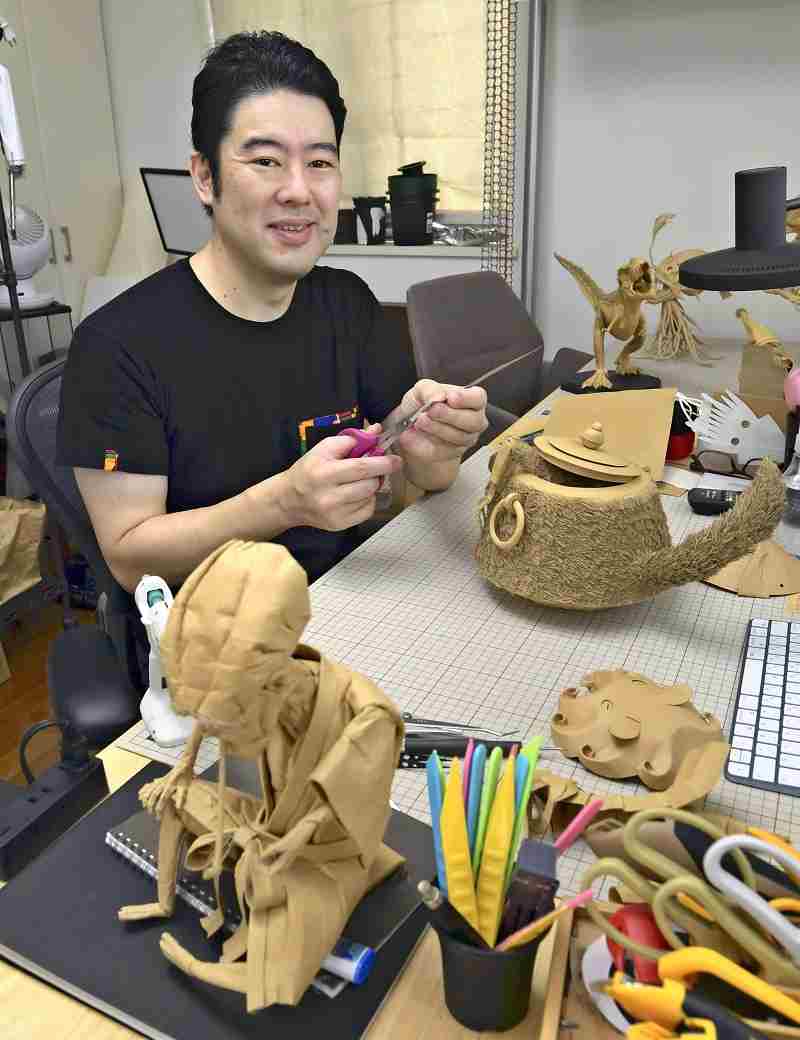
Masaki Odaka poses for a picture at his house in Niiza, Saitama Prefecture. He can even craft realistic figurines of fictional beings, such as the yokai Nurarihyon, front, and a racoon dog that has turned itself into a teapot, to his right.
10:55 JST, October 6, 2022
Masaki Odaka creates expressive and diverse figurines in his medium of choice — corrugated cardboard. His works sport a number of realistic-looking features, from skin that looks moist to thick hair that covers body parts, and often they possesses a striking dynamism, as in the figurine of a dragon poised to take flight. The 45-year-old, who works at a company by day, says it is possible to make them look real because he uses three-ply cardboard, which consists of three layers of paper glued to one another.
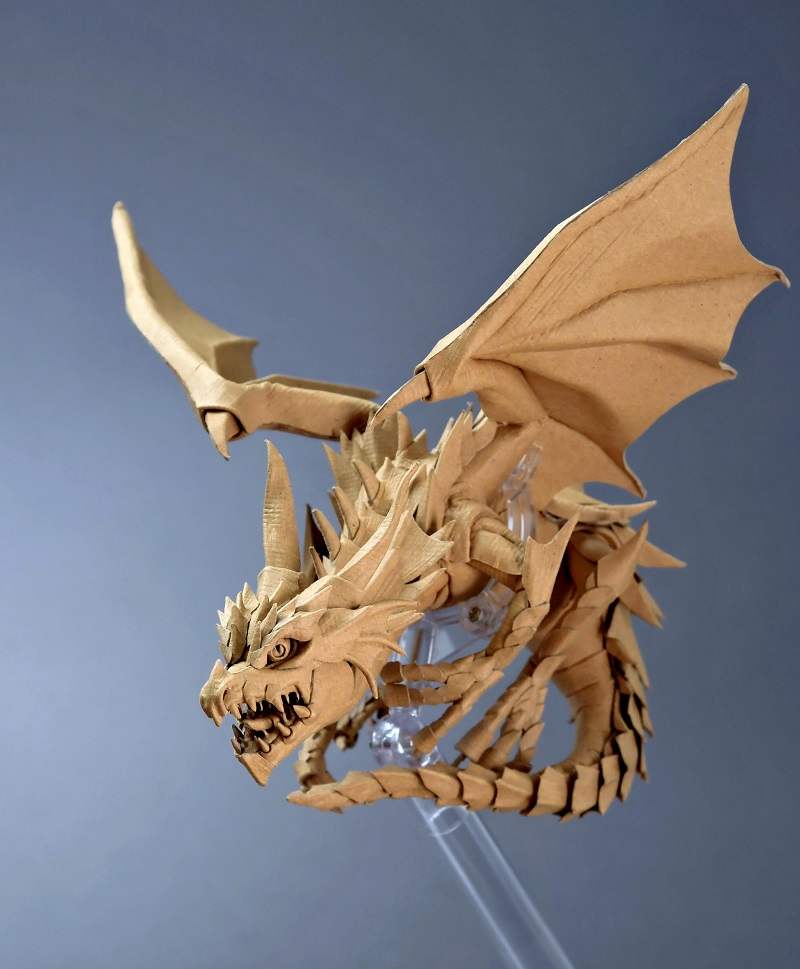
Dragons are one of Masaki Odaka’s favorite subjects as he was born in the Year of the Dragon.
The dragon piece, small enough to sit on one’s hand, has spread wings and a piercing look in its eyes. A silly looking, raccoon dog from the Japanese folk story “Bunbuku Chagama” (The wonderful tea-kettle) is covered in bristly “hairs.” A Tyrannosaurus rex, its jaws open wide in mid-roar, looks alive enough to jump out at you at any moment. Nurarihyon, a yokai spirit resembling an old man, shamelessly bares his chest from a loosened kimono.
As his main job, Odaka works at a telecommunications device company as an industrial designer. He has always been confident when it comes to working with his hands. In the spring of 2015, one of his sons, then in kindergarten, lodged a demand: “Make me something!” Odaka made him a face mask of a robot from the popular anime series “Mobile Suit Gundam” using material he had at hand — a corrugated cardboard box.
Inspired by the experience, he became infatuated with cardboard art.
“My job at the company is very digital, which makes me want to do analog things in my spare time in reaction to that,” he said.
Odaka spends late nights and weekends on his creative activities and has completed nearly 70 works so far. He does not color them, as he takes pleasure in using shades created by the layered cardboard to express such things as dark pupils and the texture of scales.
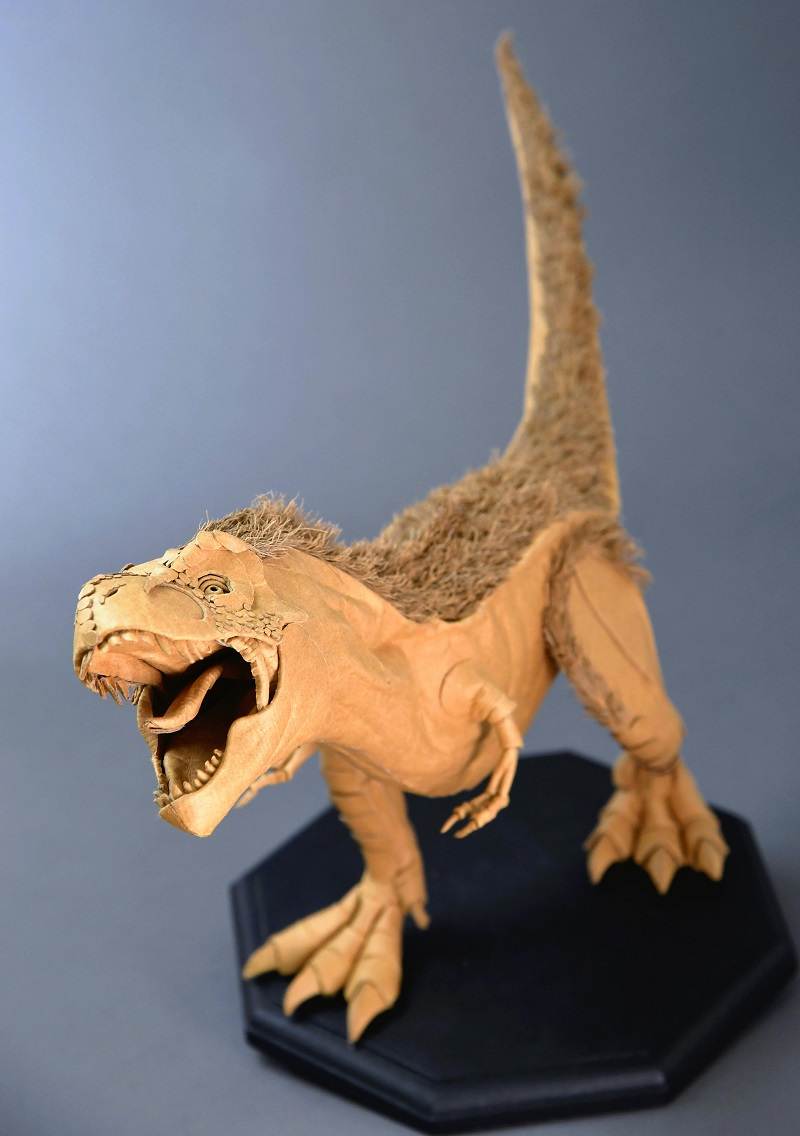
A Tyrannosaurus rex with its mouth open in mid-roar
Kneading, peeling
The cardboard in Odaka’s works is composed of three layers: two sheets of flat paper called liners and a sheet of corrugated paper in between. Odaka uses it in three different ways: as is, “kneading” it, as Odaka calls the bending and folding of the material, and peeling it apart. He also creates subtle bumps or undulations on a surface, or finely cuts a liner to produce “hair” or a similar effect.
Since he works at home, where space is restricted, he mainly constructs pieces between 20 centimeters to 30 centimeters in height and width.
The type of cardboard he uses is called G-flute, which is normally used for game console packaging, among other things. G-flute cardboard is 0.8 millimeters thick, much thinner than the cardboard used for home delivery packages, which are usually made with B-flute cardboard that is 3 millimeters thick.
Odaka needs only one day to make a simple figurine from two pieces of A3-size corrugated cardboard. But it can take him nearly two months to complete a more complex item, such as a bird seemingly covered with feathers.
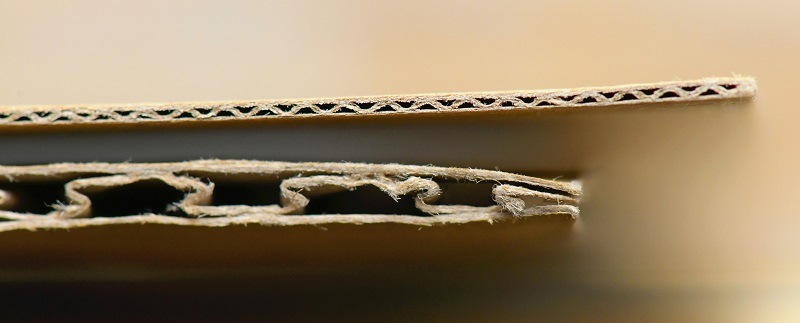
A section of G-flute corrugated cardboard, above, a variety of cardboard well suited to figurine making, and B-flute corrugated cardboard
Seamlessness
The body of a living creature, whether real or imaginary, is seamless. That’s why Odaka prefers to make his cardboard figurines using as few pieces as possible. Even when making difficult parts, such as a round head, bent joints or gnarled nails, he makes them from a single piece of cardboard.
He adds a little moisture to the piece and bends or folds it with his finger tips, a thin sculpting tool or tweezers. This process requires much physical strength, and Odaka’s dominant right arm has become about 2 centimeters thicker than his left arm.
Cellulose, a component of cardboard, loses some of its stiffness when wet, making the cardboard easier to work with. When the cardboard dries again, the cellulose stiffens and holds its shape, be it even the subtlest of bends. Water can be used to moisten cardboard, but Odaka usually sprays a fast-drying 70% alcohol solution on his cardboard. When all the parts are ready, he assembles them using a wood glue, and then it’s done. Sometimes he puts wires inside his creatures’ legs to make them stand.
When ordinary cardboard is used instead of corrugated cardboard, the folded or bent parts can crack. It is corrugated cardboard, with its cushioning characteristics, that makes his art possible.
No drafts necessary
Odaka does not draw up drafts when making his works. He jumps straight to cutting out parts using a pair of scissors or a box cutter.
“If it doesn’t turn out as planned, I’ll throw it all away and start over. That’s one of the good things about using cardboard: It’s cheap,” he said, laughing.
To convey to children the joy of creating figurines, he also holds craft making classes. He dreams of one day having his art displayed in school art textbooks.
“Wouldn’t it be nice if there was a world where, as a child, you could be a hero not just for being good at sports but also for being good at craft making?” Odaka said.
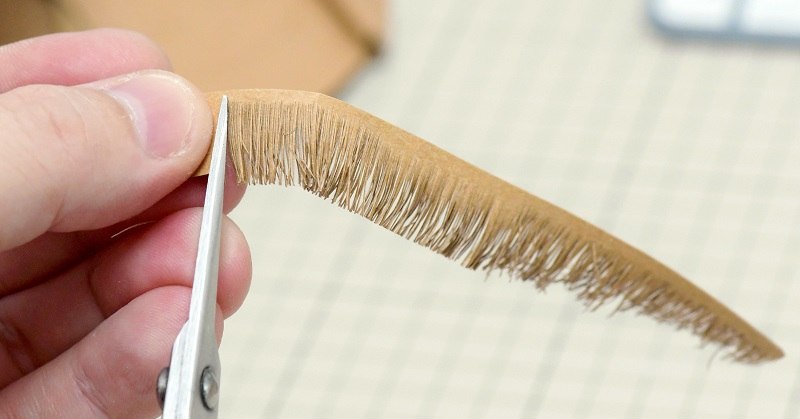
Odaka makes fine, rhythmical cuts in a liner, the flat paper that comprises the inner and outer layers of corrugated cardboard.
"Culture" POPULAR ARTICLE
JN ACCESS RANKING



